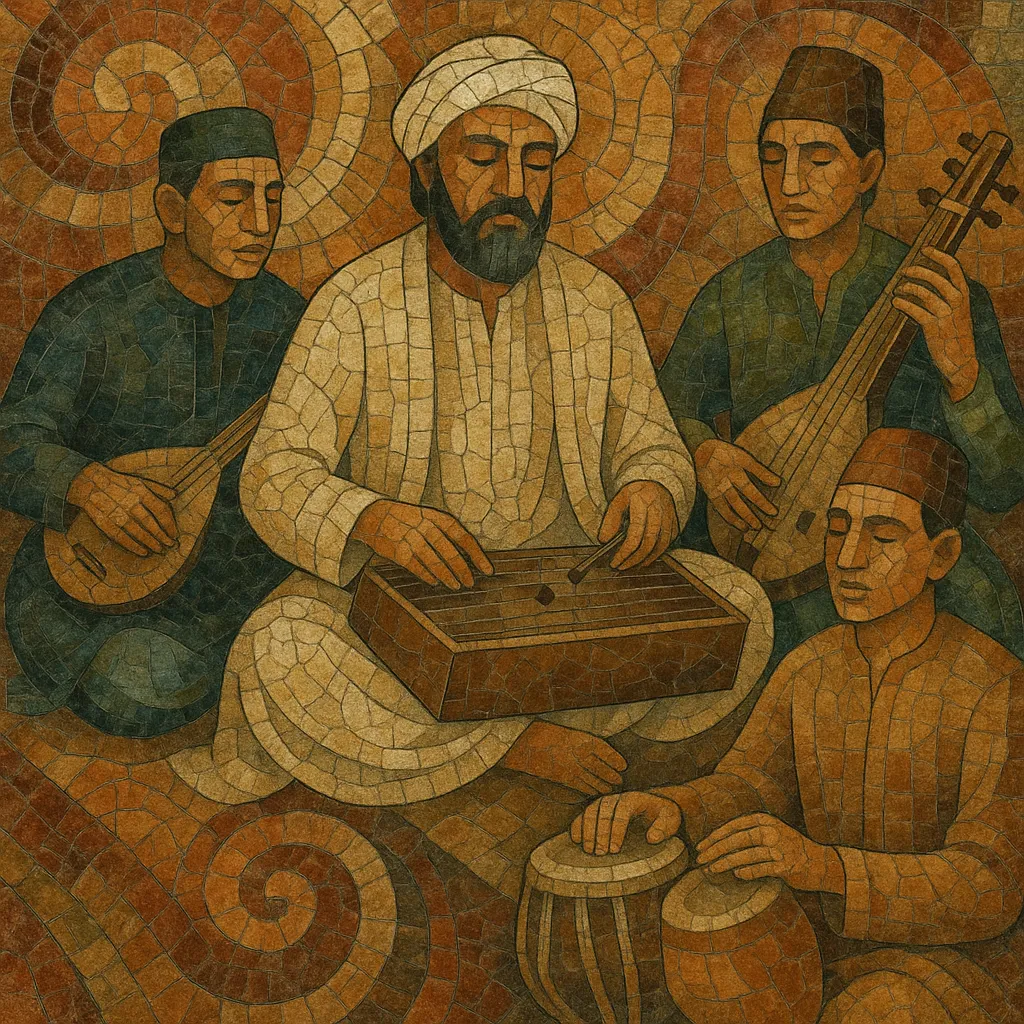Sufiana Kalam (also called Sufiana Mousiqi) is the classical Sufi music tradition of the Kashmir Valley. It blends Persian maqam-based melody with local Kashmiri vocal aesthetics and devotional poetry, producing an inward-looking, contemplative music aimed at spiritual refinement.
Performances typically feature an ensemble with santoor (hammered dulcimer), saz-e-Kashmir or sehtar (long‑necked lute), sarangi (bowed lute), and a clay goblet drum known as the wasool, with voices carrying melismatic lines in Kashmiri, Persian, and Urdu. The repertoire sets mystical verse—hamd, naʿt, manqabat, and ghazal—within modal frameworks and cyclical rhythms, cultivating a gentle but purposeful sense of trance and devotion.
Sufiana Kalam took shape in the Kashmir Valley during the 1600s as Sufi orders and migrant musicians brought Persian and Central/South Asian courtly traditions into local devotional practice. The adoption of maqam-based melody, refined prosody, and instruments such as the santoor and long‑necked lutes created a regional art-music idiom distinct from—but related to—Persian classical and Hindustani classical lineages.
Through the Mughal and later periods, Sufiana Kalam circulated between shrines (khanqahs), private mehfils, and elite households. Ensembles codified modal pathways and rhythmic cycles, accompanying the intoned kalam (poetic utterance) of Kashmiri, Persian, and Urdu mystic poets. Its purpose was not spectacle but samaʿ—attentive listening that fosters spiritual insight.
In the 20th century, families and gharanas in Srinagar and surrounding areas sustained the tradition, with radio and cultural academies helping document repertoires and techniques. Post‑1950s, notable masters standardized ensemble roles (voice, santoor, saz‑e‑Kashmir, sarangi, wasool) and pedagogy. In recent decades, conservatory projects, archival recordings, and crossover work by Kashmiri santoor exponents have renewed interest, even as practitioners advocate safeguarding the original shrine‑and‑mehfil ethos.


